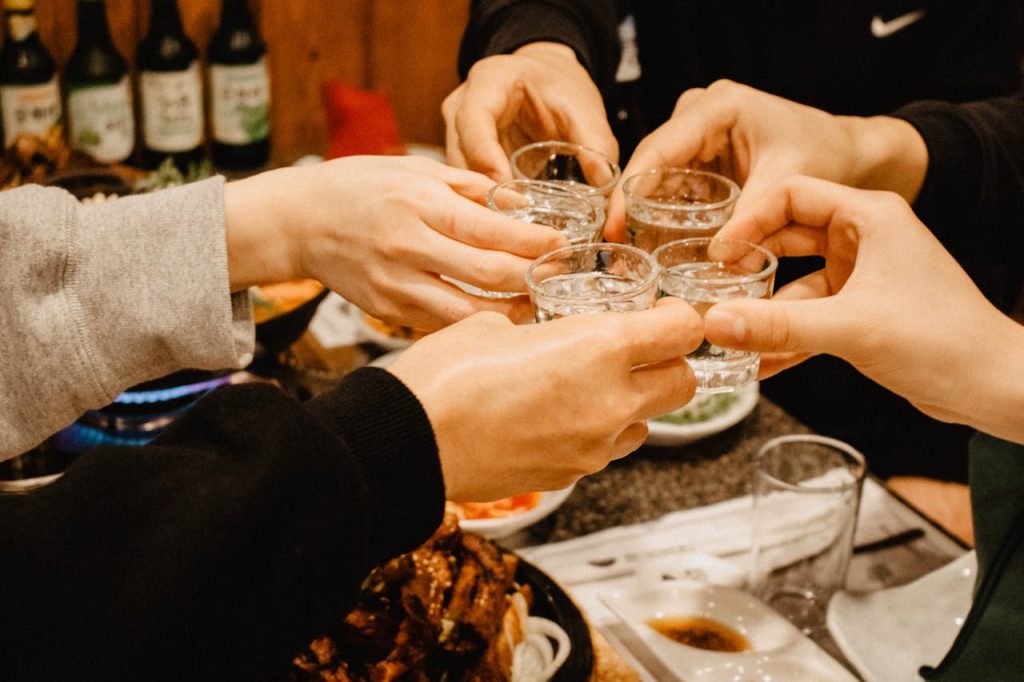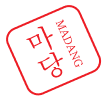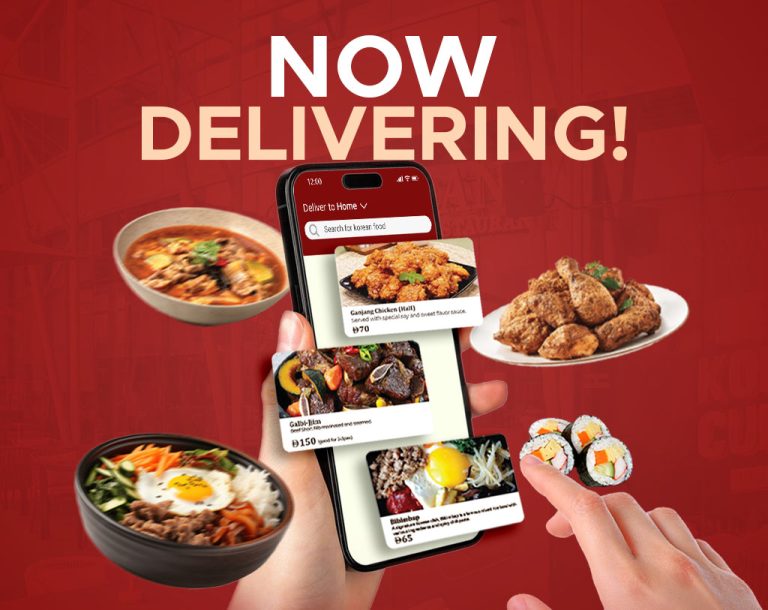Exploring Traditional Korean Drinks and Cocktails: A Sip of Heritage and Innovation

If you’ve ever been intrigued by the depth and diversity of Korean cuisine, you’ll be fascinated by its drinks culture. Traditional Korean drinks and cocktails are not just an accompaniment to a meal – they are an experience in their own right, blending centuries-old recipes with modern flair. Whether you’re keen to savour a delicate soju or explore inventive cocktails inspired by Korean spirits, you’ll discover a world of flavour that elevates any dining occasion.
In Abu Dhabi, diners are increasingly seeking authentic tastes that transport them to the bustling streets of Seoul or the quiet countryside distilleries of Korea. From premium soju collections to creative cocktails that tell a story, there’s never been a better time to sample traditional Korean drinks in Abu Dhabi at Madang, where every detail is carefully curated to showcase the best of Korean hospitality.
The Soul of Korean Spirits: Soju and Makgeolli
Let’s start with the two pillars of Korean drinking culture: soju and makgeolli.
Soju, often called Korea’s national spirit, is a clear distilled liquor typically made from rice, barley, or sweet potatoes. It has a smooth, neutral profile, making it the perfect base for sipping or blending into cocktails. At Madang, you’ll find a curated list of premium soju, including the refined Hwayo X.Premium and the bold Hwayo 53. These variations offer different alcohol content and subtle flavour notes. Hwayo 53, for instance, boasts a higher proof and a crisp finish that suits both neat pours and inventive mixers.
Meanwhile, Makgeolli is a milky rice wine that carries a lightly sweet, tangy taste. Traditionally brewed in earthenware jars, makgeolli is often enjoyed in communal bowls, symbolising togetherness and celebration. Options such as the original Rice Makgeolli or the modern 1000 Billion Prebiotics Makgeolli show how traditional recipes have adapted to contemporary tastes, sometimes incorporating fruit infusions like green grape or banana.
This combination of heritage and innovation is exactly what makes traditional Korean drinks and cocktails so special. They are rooted in centuries of craftsmanship yet continuously evolving to surprise modern palates.
Korean Spirits Meet Creative Mixology
While many people are familiar with soju shots, Korean mixology has taken exciting strides in recent years. The drinks menu at Madang illustrates how Korean spirits can become the foundation for sophisticated, imaginative cocktails that complement the restaurant’s authentic dishes.
Take the Jeju Bam Bada, which pairs Hwayo 25 soju with yuzu extract and fresh grapefruit cordial, delivering a bright, citrus-forward profile that’s perfect for a warm evening. Or the Parasite, inspired by the iconic film, which blends raspberry liqueur, pineapple juice, and cranberry splash with a soju base to create a balanced sweet-tart experience.
One standout is Sarang-hae (Love You) – a romantic concoction of Hwayo 53, Cointreau, rhubarb liqueur, and vanilla syrup. It’s the sort of drink that proves Korean spirits are as versatile as any gin or vodka in the craft cocktail world.
Signature cocktails go beyond soju alone, incorporating other spirits and Korean ingredients to reflect the cultural blend. For example, the Salang-Salang fuses rosemary-lemon vodka with plum soju and yuzu, achieving a refreshing yet aromatic sensation. And for those who like a hint of nostalgia, Old Boy – named after the cult Korean thriller – mixes salted popcorn cognac and bourbon with a whisper of sweet vermouth, offering a layered and cinematic experience in a glass.
Also on the list are Sonagi (Rain Shower), blending Hwayo 53 with Aperol, passionfruit puree, vanilla syrup and pineapple juice, and Seoul’s Dal (Seoul’s Moon), a bold creation featuring soju, bourbon, sweet vermouth, amaretto and bitters. Both offer layered, thoughtful flavours that match Madang’s inventive flair.
Mocktails That Celebrate Korean Flavours
The joy of Korean drinks isn’t limited to alcohol. Non-drinkers can also savour creative beverages inspired by traditional ingredients. Mocktails like Budnamu, which pairs Korean matcha tea with homemade soda water, showcase the same respect for heritage and detail.
If you prefer something fruity, Gaenari (red apple juice, fresh ginger, mint, and sugar syrup) or Acacia (pineapple and lemon juice with basil) deliver complex tastes without the alcohol. These options ensure everyone can participate in the spirit of the occasion, whether it’s a casual dinner or a celebration. You can also try new drinks on the menu, such as Dong-Baek, a sweet blend of apple juice and blackberry honey with a sparkling finish, or Cosmos, a refreshing mix of hibiscus, pandan, lemon, and green apple.
Pairing Drinks with Korean Cuisine
Part of the appeal of Korean drinks and cocktails is how seamlessly they complement classic Korean dishes. Soju pairs brilliantly with grilled meats, particularly Korean BBQ, cutting through the richness with a clean, cooling finish. Makgeolli, on the other hand, works well with pancakes like kimchi jeon or seafood pajeon, as the acidity balances the savoury flavours.
For a unique Korean dining experience in the UAE, consider pairing your drinks with an array of side dishes (banchan). The contrast between tangy pickles, spicy kimchi, and a delicate rice wine creates a feast for all senses.
Cocktails like Sarang-hae or Parasite can also enhance your meal, offering a modern twist that surprises the palate between bites. And if you’re exploring multi-course menus, lighter cocktails with yuzu or plum are perfect to refresh your taste buds.
The Art of Korean Drinking Traditions
Drinking in Korean culture isn’t merely about consumption – it’s about respect and ritual. Pouring for others, turning your face away when taking a sip in front of elders, and drinking in small, thoughtful quantities are all gestures that show courtesy and connection.
These traditions are part of what makes exploring Korean drinks so enriching. Even as modern mixology transforms soju into avant-garde cocktails, the underlying respect for craftsmanship and community remains.
In Abu Dhabi, where global influences meet local curiosity, Korean dining venues like Madang offer both authenticity and innovation. You can sit down with a chilled bottle of Hwayo X.Premium, appreciating the clarity of traditional distillation, or raise a glass of Seoul’s Dal (a sophisticated blend of soju, bourbon, and bitters) to toast new memories.
Why Try Traditional Korean Drinks and Cocktails?
Whether you’re a connoisseur of spirits or simply curious about something different, there are many reasons to explore these remarkable drinks:
- Variety: From smooth soju and creamy makgeolli to vibrant cocktails, there’s a drink for every taste.
- Culture: Every sip offers a story – of Korean heritage, artistry, and celebration.
- Pairing: Korean drinks pair effortlessly with the cuisine, making every meal more immersive.
- Innovation: Creative cocktails bring a fresh perspective to centuries-old recipes.
For those living in or visiting Abu Dhabi, this is the perfect moment to discover a rich drinks culture that’s both familiar and novel.
Embark on Your Korean Drinks Adventure
As Korean food continues to win hearts across the UAE, the drinks that accompany it deserve just as much attention. From elegant bottles of premium soju to unforgettable cocktails that blend East and West, the world of Korean drinks and cocktails is ready to be explored.
The next time you plan an evening out, consider lifting a glass to tradition, innovation, and the simple joy of good company. Your journey into the flavours of Korea might begin with a sip – but it will leave a lasting impression.

Madang Korean Restaurant is one of the top-rated Korean restaurants in Abu Dhabi. Boasting of its traditional Korean interior design and style seating giving customers unique and realistic experience of Korea and its vast number of authentic Korean Cuisine.
Quick links
Find Us
-
Main Branch (Now Open)
Ground Floor, Holiday Inn, 31st Dhafeer Street, Al Sa`Adah, Zone 1, Abu Dhabi, United Arab Emirates - +971 2 585 5441, +971 56 327 5999







